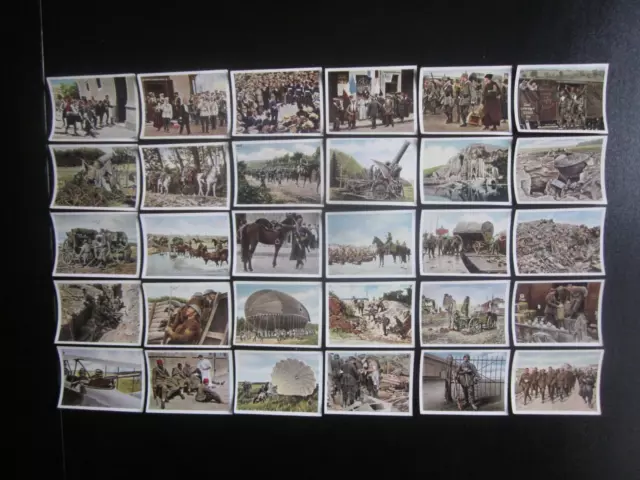30 color German cigarette cards of World War 1 action, issued in 1937
Offered here are 30 original German cigarette cards of World War I, issued in 1937 by a number of German cigarette companies for the album Der Weltkrieg (The World War). Pictured here are: No. 1: The Murderer of Sarajevo Under Arrest (1914). On June 28, 1914 the Austrian Crown Prince, Archduke Franz Ferdinand, and his wife Sophie fell victim to an assassination by the Serbian student Princip. Because of the tense political situation in Europe at that time, the "Shots of Sarajevo" became the most visible cause of WWI. No. 2: The French Head of State Visits Russia (1914). On July 20, 1914 the French Head of State Poincare met with the Czar in Kronstadt. This meeting was very important because it cemented the alliance between Russia and the Western Powers against Germany. After the meeting, Poincare immediately returned to France and a short time later war was declared. No. 3: "Impending Danger of War" (1914). Because of Russia's mobilization of its military, Germany saw itself forced to announce on July 31, 1914 "the impending danger of war". Following ancient custom, the announcement was made by an officer accompanied by some military musicians. On August 1, 1914 Germany then mobilized its army and navy. No. 4: A French Recruitment Office (1914). While Germany was trying to avoid war, France mobilized its Eastern Corps on July 31, 1914, one full day before war was declared. The next day at 4:30 in the afternoon the French Minister of War signed the general mobilization orders. Germany then did the same at 5:00 pm the same day. No. 5: The Imperial German Army Marches Out to War (1914). Accompanied by music and cheering crowds the regiments make their way along flag-decorated streets to the train stations to be shipped off to our threatened borders. Those who remain behind try in different ways to help the departing soldiers. No. 6: Military Transports (1914). The German mobilization of troops at the start of the war proceeded in an orderly manner and the train transports did an exceptional job. Within just a few days some 11,100 trains transported 3,120,000 men and 860,000 horses with all the necessary equipment to the borders. The enthusiasm of the troops was great. No. 7: Fake Gun (1914). When our troops were gathering at the border at the beginning of the war, our border stations were lightly manned. However, to make them look strong, so as to prevent an attack by the enemy, fake guns were often put in place that looked genuine from a distance. No. 8: Hussars on Patrol (1914). Every army on the move sends out cavalry ahead of it to scout if the enemy is in the area and what he might be doing. These horsemen also serve to protect the approaching column. Patrols far to the front were very dangerous if the terrain was flat and when the patrol had to go through towns. No. 9: German Infantry Crosses the Belgian Border (1914). The German Army was able to carry the battle to the enemy in his own territory. Crossing a border, even after a long and hard march, was often a reason to celebrate and accompanied by music. No. 10: "Big Bertha" (1914). The path of attack for the German army through Belgium and France was lined with many fortifications that were considered impregnable. The German Chiefs of Staff, however, ordered a huge 42 cm caliber mortar from the Krupp Steel Co. that was called "Big Bertha". It could destroy any concrete or armored fortification. No. 11: The Fighting at Dinant (1914). The German Army attacked the French positions along the line between Aachen and Diedenhofen and focused in particular on the area around the Maas River. There was heavy fighting for the crossings over this river, especially at Dinant, where, sadly, Belgian civilians were also involved in the fighting. No. 12: The Effect of Our 42 cm Guns at Luettich (1914). The attack on Luttich at first did not go according to plan. Only one brigade, under Ludendorff, was able to enter the fortress. However, the streets were largely empty because of the devastating effect of our large mortars. No. 46: A German Field Radio Station. On May 2, 1915 the German army broke through Russian lines at Gorlice-Tarnow and created a salient 60 kilometers long and 5 kilometers deep. The coordination of such a large-scale action relied on field radio stations, as is pictured here. No. 47: Marching Through Galicia on the Eastern Front (1915). The German breakthrough at Gorlice-Tarnow forced the Russians to withdraw to the Western Carpathian Mountains. On June 3rd we once again took Przemysl and Lemberg on the 22nd, despite a new Russian offensive. In July the German army turned north and soon drove the Russians out of Poland. No. 49: A Russian Cossack Horseman (1915). The Russian Empire had at its disposal an immensely large number of cavalrymen. However, they accomplished less than their commanders had hoped. The only thing that the German cavalry learned from the Russians, and in particular from the Cossacks, was how to destroy everything while retreating. In this, the Russian cavalry went beyond what was militarily necessary. No. 50: Czar Nicholas Blesses Departing Russian Troops (1915). In July 1915 the Russian front in Poland became precarious. For the reinforcements going to aid those at the front, a blessing from the Czar was something special, for "Vater Czar" was not only the head of the country, but also of the Russian Orthodox Church. No. 51: Unloading Supplies (1915). Our great successes on the Eastern Front in 1914 and 1915 were due in large part to our efficient use of railways through which we could bring troops quickly and often surprisingly to the point of attack or evacuate them quickly, if the front was in danger of collapse. No. 90: Supporting Troops Under Cover (1916). During the Battle of Verdun it was often difficult for the reserve and supporting troops to find cover. As we moved forward, we were sometimes able to use French facilities, otherwise they had to use the craters created by artillery barrages. And sometimes the artillery barrage was heavier on these support areas than on the front line. No. 91: German Trenches on the Somme River (1916). Since all of the German reserves were committed elsewhere, the French and English started a major offensive on June 24, 1916 along the Somme River. The months-long battle saw our lines pushed back, but not broken. No. 92: English Soldier with a Trench Mirror (1916). Since the French Army was chewed up badly at Verdun, the English were forced to take over two-thirds of the front on the Somme River. This picture shows how the English spied on German trenches without leaving their cover: a small mirror raised above the lip of the trench on a bayonet. No. 93: Launching a Tethered Balloon. Such balloons were anchored to the ground with a cable and could be pulled back down when their assignment was finished by the use of a winch. They were useful for identifying targets for artillery. However, wind and enemy airplanes made their use very dangerous for the men who flew with them. On one day during the Battle of the Somme we lost six of nine observation balloons. No. 94: A Machine Gun Unit Advancing. The English and French offensive on the Somme River on July 1, 1916 successfully overran many German trenches that had been destroyed by enemy artillery fire. However, German resistance stiffened through the use of machine gun nests and defensive positions in the ruins of many villages. No. 95: A Ruined Village (1916). At the Battle of the Somme villages in the area became little more than piles of rubble. However, staff headquarters, reserves and medical facilities were often set up in the cellars of the destroyed houses, or artillery and machine guns were positioned there. Sometimes the only way to recognize a town was to consult a map to see what this pile of rubble was once called. No. 96: Loading Heavy Munitions (1916). The large amounts of munitions that were needed at the front required munitions trains to travel as close as possible to the fighting. The rest of the way to the artillery batteries the shells were carried by motor vehicles or horse-drawn wagons. No. 97: Manning a Plane's Machine Gun. At the Battle of the Somme the French and English air forces dominated the skies. German planes found it hard to do any reconnaissance because they were greatly outnumbered. However, after some weeks German planes equipped with machine guns were able to restore the balance in the skies. No. 98: Wounded French Colonial Troops in a German Field Hospital (1916). From the beginning of the war England and France used troops from their colonies during the fighting in Europe. After a short while the English did not use their Indian troops anywhere but in Asia and Africa because of climatic conditions. However, the French kept using such troops and constantly increased their numbers. they came mostly from Morocco, Algeria and Senegal. No. 99: Landing with a Parachute (1916). Zeppelins, tethered balloons and airplanes are all outfitted with parachutes for their crew. These have proven particularly useful for the observers in the tethered balloons. If they were shot at by artillery, the balloons could be drawn back down to the ground quickly. However, if they were attacked by airplane, the only recourse for the observer was usually to jump out of the balloon. No. 100: Medical Station Right Behind the Front (1916). The total number of wounded in the war on all sides was some 17 million. Germany alone suffered some 4.2 million wounded. Because of the high level of our medical facilities and staff, a large percentage of our wounded were able to regain their health. No. 101: German Messenger during the Battle of the Somme (1916). One of the most difficult problems faced by troops in battle is the transmission of communications. Despite all the progress in technology in this area, the problem was never fully solved. Therefore, the messenger soldier remained the main means of communicating and for this he was always highly respected by his fellow troops. No. 102: Captured English Soldiers (1916). By the end of September the British and French offensive on the Somme could only push forward about 15 kilometers at most and they were not able to achieve a breakthrough. The offensive was continued but its effectiveness grew weaker and weaker. The Battle was over by the end of November, costing our opponents some 750,000 dead, wounded and captured.
The cards measure 2 and 3/8 inches by 1 and 7/8 inches.
With multiple purchases, please wait for the invoice for reduced shipping.
- Condition: Used
- Condition: Very good condition for their age. Never glued. Nos. 8, 96: Small corner crease lower right. No. 10: Two horizontal creases on right. No. 47: Small faint crease near top. No. 51: Horizontal crease on right. No. 93: Small crease upper right. No. 95: Faint horizontal crease near top. No. 99: Small crease upper left. No. 102: Number of creases; small tear on left margin. Please see photos for exact condition.
- Country/Region of Manufacture: Germany
- Modified Item: No
PicClick Insights - 30 color German cigarette cards of World War 1 action, issued in 1937 PicClick Exclusive
- Popularity - 2 watchers, 1.0 new watchers per day, 2 days for sale on eBay. Good amount watching. 0 sold, 1 available. Good amount of bids.
- Best Price -
- Seller - 3,182+ items sold. 0% negative feedback. Great seller with very good positive feedback and over 50 ratings.
People Also Loved PicClick Exclusive
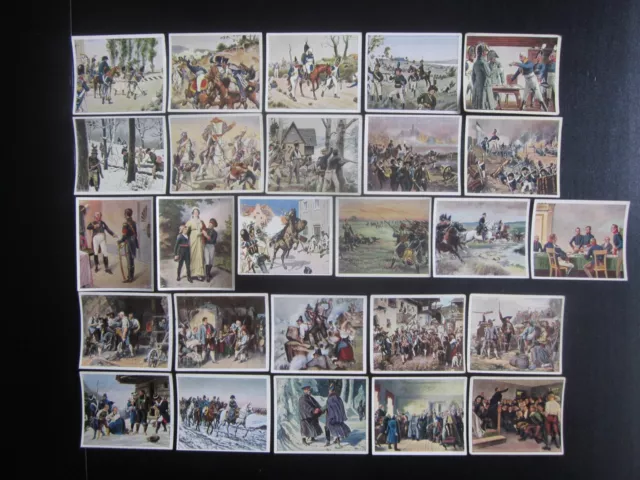
52 German cigarette cards of the Napoleonic Wars (1805-15), issued 1935.
$1.60 1 Bid 5d 12h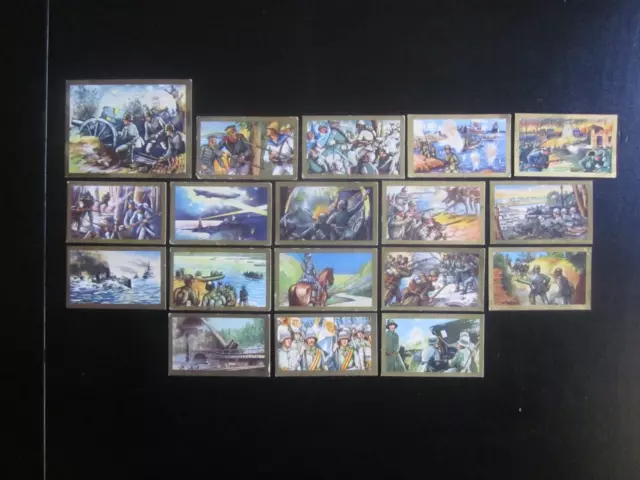
18 German color cigarette cards of World War I, issued 1934
$1.60 0 Bids 5d 12h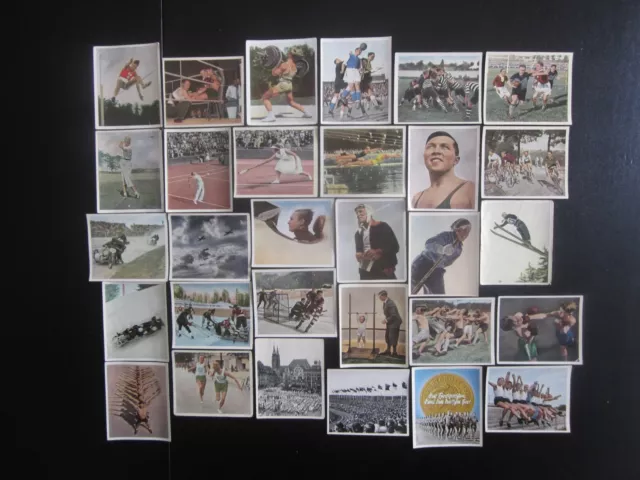
30 color German cig. cards: German Sports in the mid-1930s, issued 1935
$1.60 0 Bids 5d 12h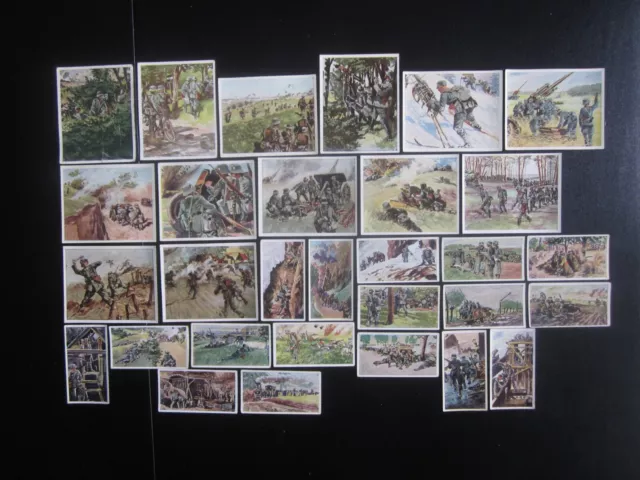
30 color German cig. cards: The German Wehrmacht on Maneuvers, issued in 1936
$1.60 0 Bids 5d 12h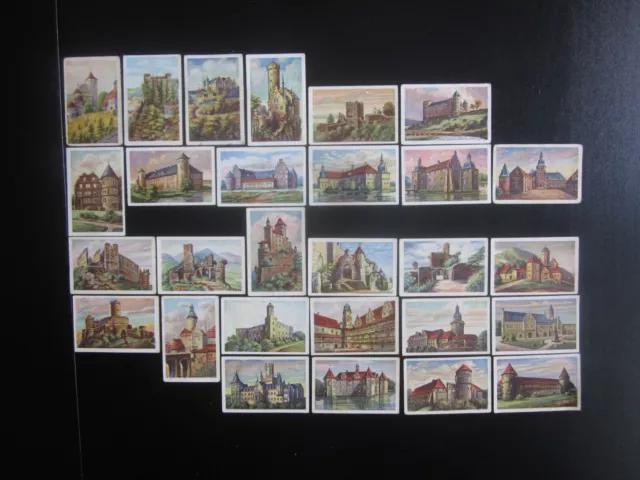
28 German cig. cards: Famous Historic German Castles, issued 1932
$1.60 0 Bids 5d 12h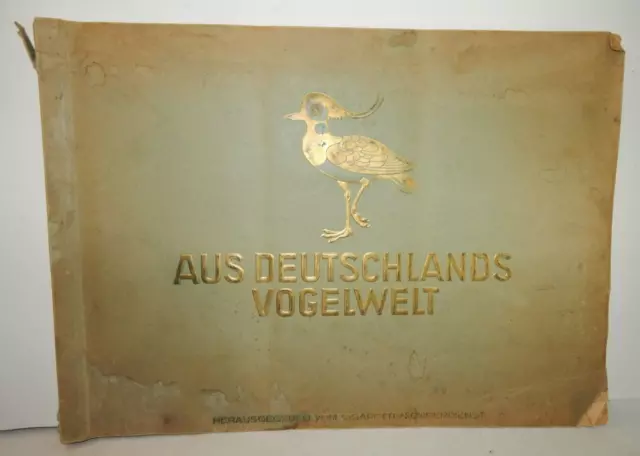 1 watcher
1 watcher Antique GERMAN BIRD BOOK w/194 COLOR PHOTOS CIGARETTE TOBACCO CARDS 1932
Antique GERMAN BIRD BOOK w/194 COLOR PHOTOS CIGARETTE TOBACCO CARDS 1932$199.47$149.60 Buy It Now or Best Offer 13 watchers
13 watchersCigarette Card Album German Third Reich 1930s w/310 color cards Berlin Germany
$411.32 Buy It Now
